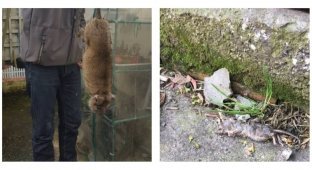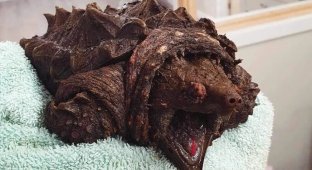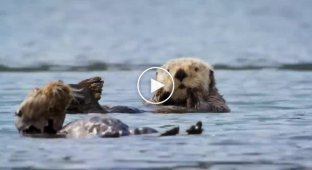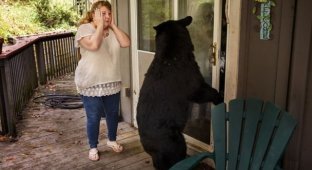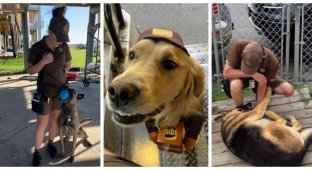Wild dogs: how Africa's best predators beat lions, leopards and cheetahs (10 photos)
These animals return with prey in 9 out of 10 hunts! Today we will stick our nose into someone else’s business, reveal all the secrets of experienced hunters and answer the most resonating question - why are these superpredators on the verge of extinction? 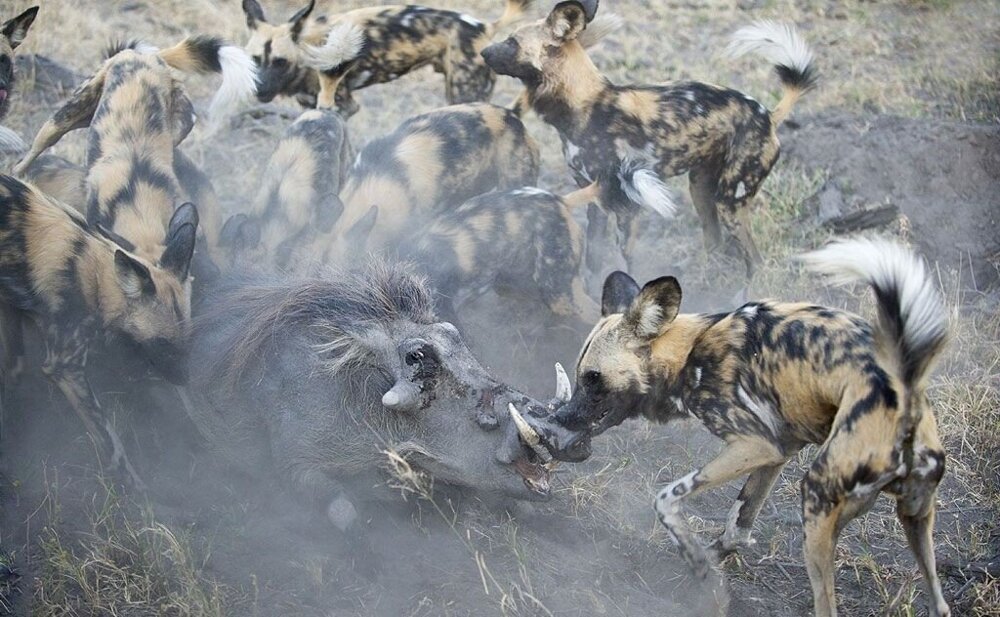
Hakuna Matata is over. Real life has begun.
Hyena-like, hyena-like, painted, or wild dogs - contrary to all their names, have nothing in common with either hyenas or modern dogs. Their separate evolutionary path began about 3 million years ago, and now red wolves are considered the closest living relatives of wild bobcats. 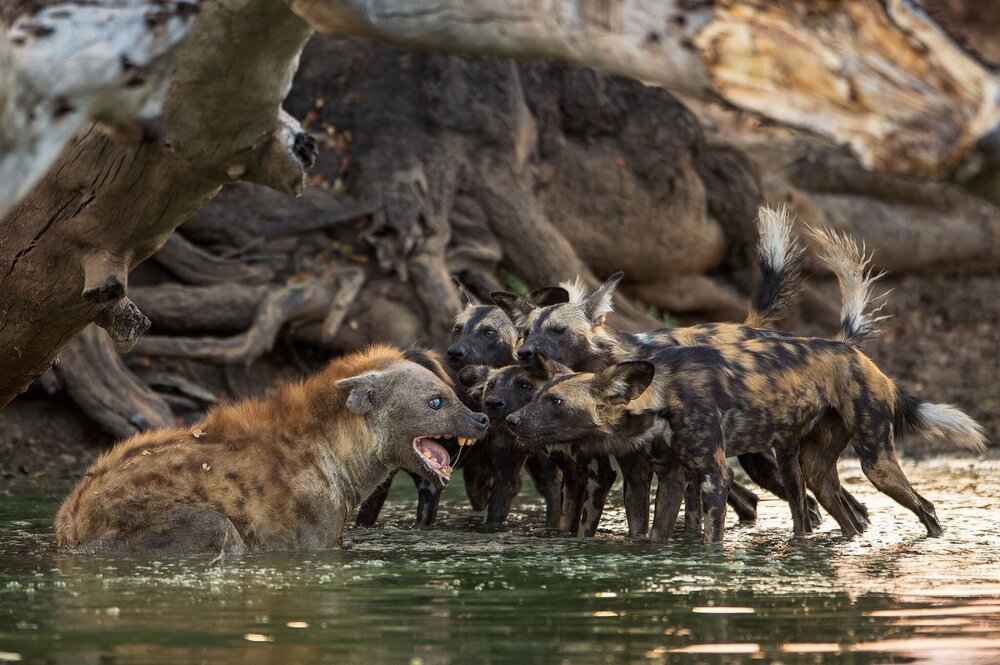
No, guys, this monster is not suitable to be our relative.
But not a single representative of the canids, regardless of relationship status, can compete with our heroes in hunting skills. Even the big cats quietly smoke on the sidelines, envying the wild dogs. For a lion, the hunt is successful 25% of the time. For a leopard - 40%. In the cheetah - 50%. And wild dogs will catch the beast with a 60-90% probability! 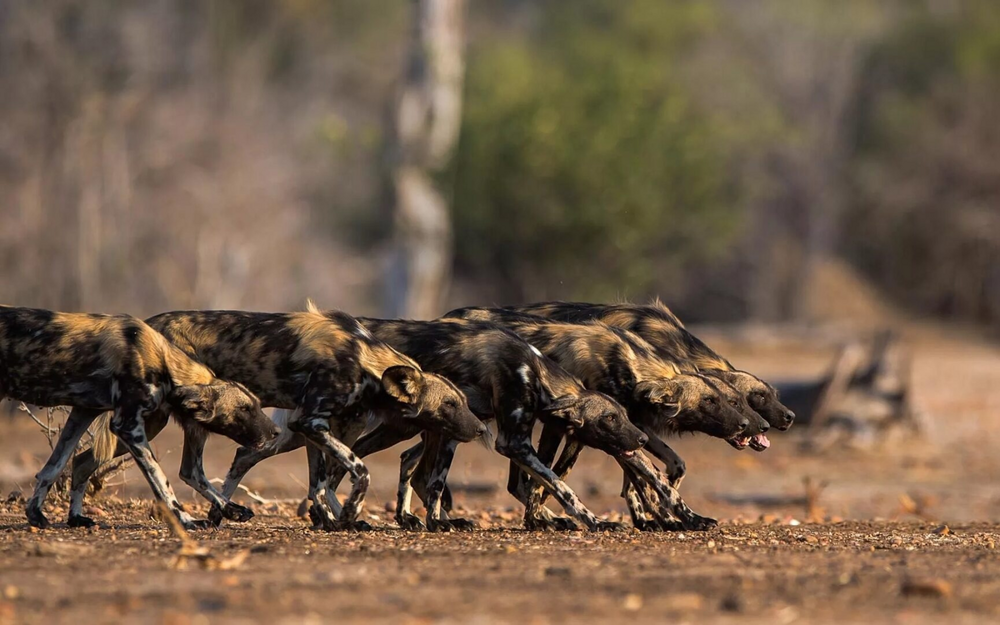
We're not a gang. We're a gang!
Today, wild dogs are among the most specialized and therefore successful meat eaters. Although, at first glance, they will not cause horror. Wild painted dogs grow the size of a good shepherd dog - 60-75 centimeters at the withers and up to 40 kilograms when well-fed. Decent, but not impressive. Shouldn't apex predators be a little bigger and stronger?
They should, but they don't have to. So the woolly hyenas did not oblige anyone to be big and scary: these animals conquer not with brute strength, but with numbers and teamwork. 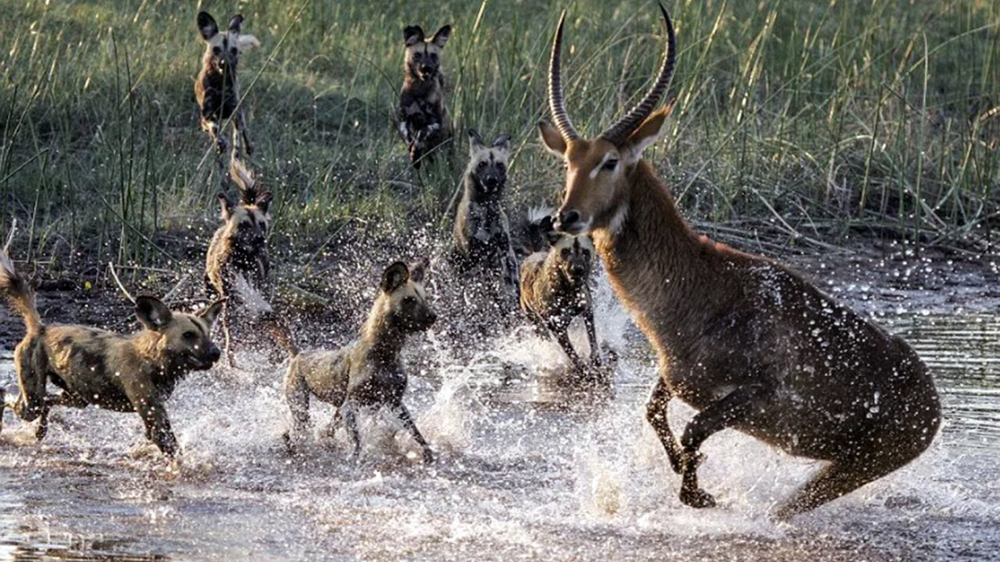
Me: I go into an expensive store. Sellers: Good afternoon, what are you looking for, how can we help?
Depending on the place of registration and the amount of prey, one pack of wild dogs can number from 2 to 27 individuals. Usually all members of the group are related by blood and consist of the dominant pair, their siblings and cubs of different ages. Hierarchy is strictly maintained, but this does not mean that everyone in the pack is ready to rip each other's throats out. Wild dogs resolve conflicts even before they appear; they almost never have fights. What's the secret? In love and voting!
The pack's morning rituals begin at dawn. Wild dogs are diurnal animals, so their peak activity occurs during beautiful sunny hours. After waking up, all the dogs in the group actively greet each other, rub their muzzles against their brothers, whine, squeak and in every possible way express to their fellow tribesmen how glad they are to see them. How often do you hug your loved ones in the morning? 
Lyokha, how many years, how many winters! Haven't seen each other since yesterday!
Next, the flock decides whether there will be a hunt today. Voting occurs by sneezes - the more each individual sneezes, the higher the likelihood that the animals will go hunting today. If the dominant individuals begin to sneeze, there will be dinner with 100% probability. How often do you take into account the opinions of your loved ones when making even everyday decisions? 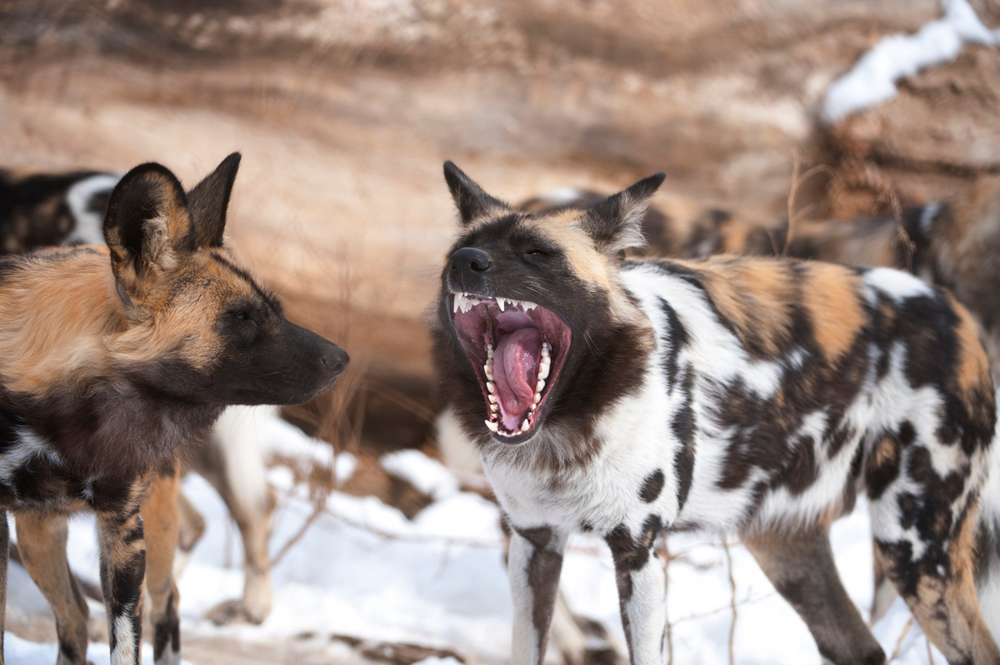
But such a vote cannot be faked by any means!
When hunting, wild dogs also act together. Usually all members of the pack go to work at once, but when there are puppies, one of the adults always stays with them. Old and sick dogs also stay at home - they don’t have to worry, other dogs will definitely share their prey with them. How often do you share treats with your family? 
Hey, spotted, you don't look much like our pack member. Well, move away from meat!
The menu of hyena dogs includes almost all animals up to 300 kilograms - from rodents to antelopes. A pack of hunters can even kill a young buffalo! But how?! Coordinated actions and thoughtful tactics are the main secret.
Most often, the flock is divided into two groups: beaters and attackers. The task of the first team is to scare off the herd, identify the weakest individuals, separate them from the main mass and drive them into an ambush. This work is carried out by young and strong individuals who are capable of chasing prey for a long time. The most experienced hunters of the pack await the prey in ambush. It is from their deThe action depends on whether the family will be left with lunch. They surround the prey driven into their paws from the sides and front, closing a deadly ring. 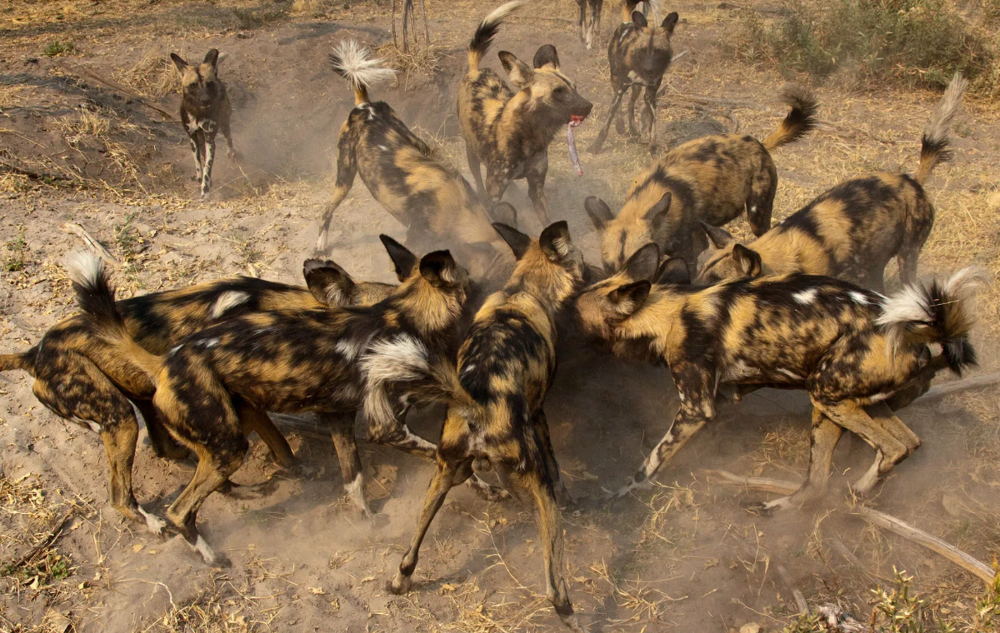
This is the real circle of life.
Naturally, all hunting wisdom is not given to wild dogs from birth. Puppies begin to participate in cooperative hunting from about 5 months. At first they just walk with adults, and later they learn to kill themselves. At a time when the little ones are just learning the basics of superpredation, the pack suffers a lot of failures in the hunt. This is understandable: the young animals do not yet know how to properly drive prey. And guess what? Adults patiently teach puppies all the tricks. How often do you show tolerance towards children? 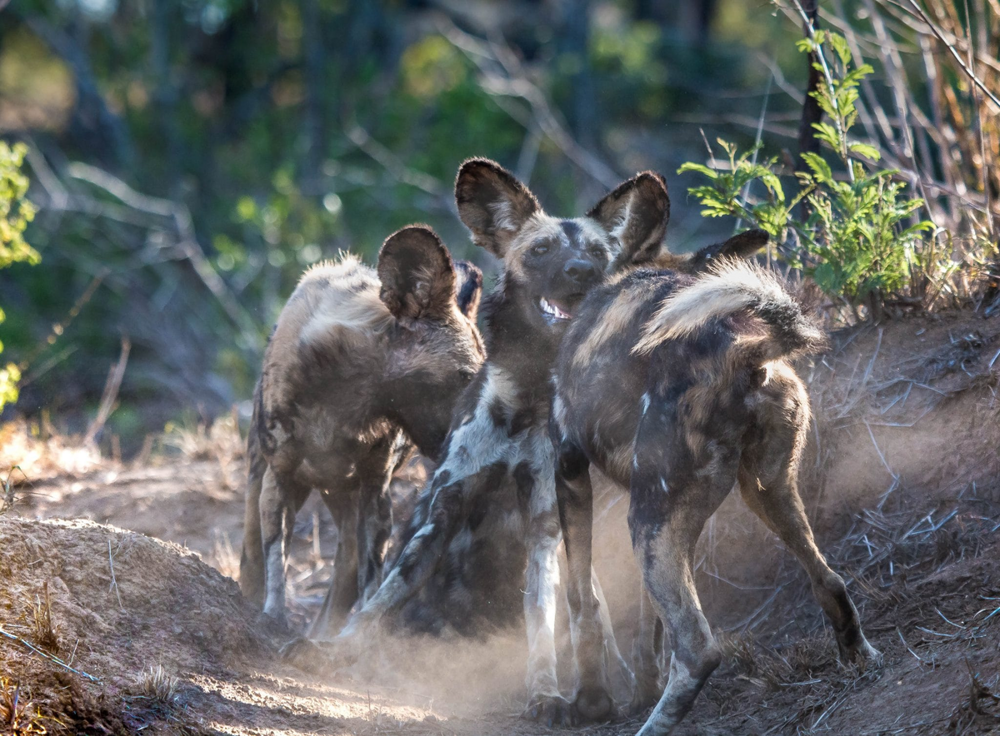
When your brother decided to show you a new technique that he learned while hunting.
The only time when painted watchdogs can show intolerance and even cruelty is the breeding season. Only the dominant couple has access to play. The female gives birth to up to 20 puppies at a time, which is quite enough to maintain the size of the pack and increase the population as a whole. Therefore, if suddenly a subordinate female gives birth to puppies, the reprisal will be very swift. At best, the alpha mother can deprive the rebel and her offspring of the support of the pack, and at worst, she can destroy the entire brood.
Cruelty is due to limited resources: the flock simply cannot feed two litters at once. Even here there is a lesson to be learned! There is no such thing: “God gave a bunny, he will also give a lawn” - you need to approach the birth of children thoughtfully and calculate your strengths very well. 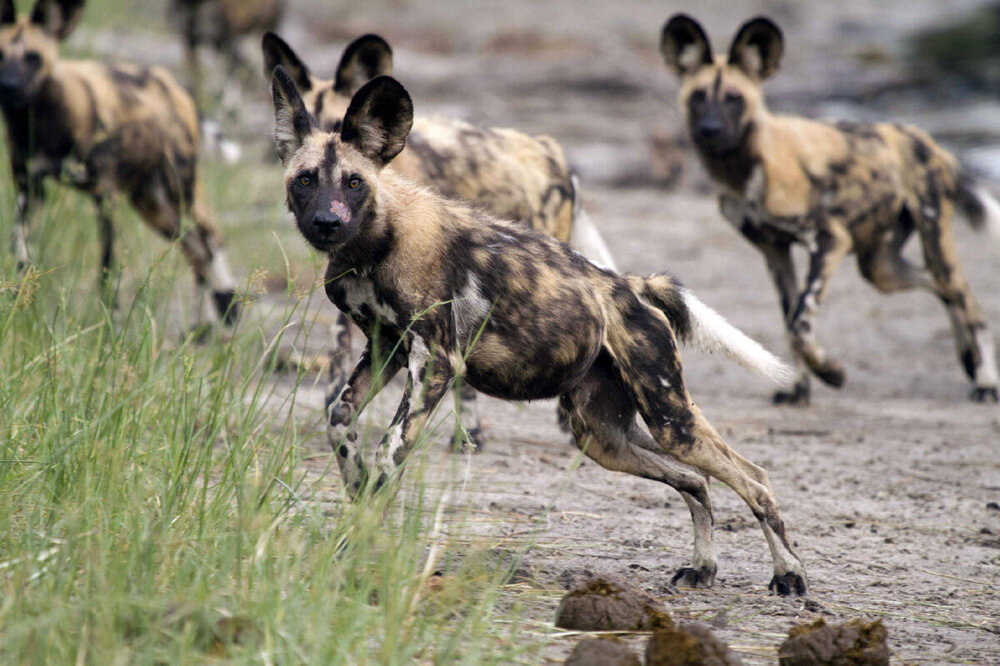
If a female wants to continue her family, she can leave the pack and start her own.
The moral of the story is this: being an apex predator isn't always about claws and teeth. The most successful animals use their intelligence - that’s the real trump card! And our heroes disappear not because these tactics do not work. Everything is as usual - people populate more and more places, destroy predators to protect themselves and livestock, fragment the ranges of dogs, drive them away from their usual habitats. No matter how smart the hyena-like dogs are, there is no trick against a crowbar, just like against a gun.












